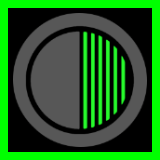
OUR CASE
Drew was taken for PCI and had successful stent insertion for an LAD occlusion.
Sedation was ceased and he remained unconscious.
He is brought to ICU for ongoing management.
ICU SPECIFICS
> Targeted temperature and shivering management
> Ventilation strategy (PaO2 75-100 mmHg, PaCO2 35-45 mmHg)
> Sedation strategy – propofol & remifentanil
> EEG and seizure management
> Haemodynamic management MAP > 65, TTE, vasopressors and inotropes
> General ICU management: VTE, BGL, Nutrition, SUP
TTM: The Back Story
Following publication of 2 randomised controlled trials in 2002, by the Bernard et al and the HACA group the use of therapeutic hypothermia protocols targeting T32-34C became widespread.
These studies had flaws but concluded that therapeutic hypothermia, cooling to 33 degrees post VF/VT arrest resulted in better neurological outcomes
The TTM study was published in 2013. This was a larger and more methodologically sound study comparing targeted temperature management of 33 verses 36 degrees post OOHCA. It showed no difference between the two temperature targets in mortality or neurological outcomes.
TTM2 was published in 2021:

This showed:
> Avoiding fever is the key
> TTM is still important in post resuscitation care of the unconscious cardiac arrest patient
> No benefit to hypothermia as there was a similar outcome whether 33ºC or <37.8ºC was selected as the target temperature.
> Hypothermia group were more likely to:
- Develop arrhythmias causing haemodynamic instability
- Spent more time mechanically ventilated (3.8 days vs 2.9 days)
- Need neuromuscular blockers (66% vs 45%)
Note: this only included OOHCA from presumed cardiac cause; does not necessarily apply to <18 yo’s, pregnant women, non-cardiac causes of arrest, or in-hospital CA.
So what Temp to go for?
Primo non nocere
A targeted temperature of <37.8 for 72 hours after ROSC
Key aspects of TTM
“High quality” TTM is essential
> A targeted temperature of <37.8oC should be the aim and be maintained for 72 hours after ROSC.
> A trigger temperature of 37.5oC can be used to commence active cooling using a surface cooling device.
> If a patient has an initial temperature < 33°C, cover with a warm blanket and allow passive warming, until the core temperature reaches 35oC.
> If the patient has a temperature of 35-37.5oC they do not have to have any active temperature intervention.
> Sedation should be continued for 40 hours to ensure ease of temperature control.
> Short acting agents such as propofol, remifentanil or fentanyl in the lowest doses necessary to tolerate temperature management and prevent shivering should be used.
> Extubation should be attempted at the earliest possible time during this phase, if appropriate, according to standard practice.
Temperature Management
> All patients to have a bladder temperature probe
> All patients to be prescribed regular paracetamol (enteral or intravenous)
> Once committed to this pathway, patients should be sedated for at least 40 hours
> If temperature reaches 37.5oC this is the trigger to commence temperature management
Expose patient
Use tepid sponges, NG iced water (200ml of H2O, medical order on ERIC)
> If temperature reaches 37.8 oC this is the trigger to commence surface cooling
Apply cooling blanket
> Use bladder temperature IDC/probe to titrate cooling
SHIVERING
Shivering makes achievement of the temperature target harder. It needs treating.
Treat preemptively and aggressively to avoid having to use heavier sedation and paralysis that delays waking and prognostication
Tier 1: Before it starts
- Paracetamol 1g q6h regular not PRN
- Magnesium to achieve > 0.8 mmol/L
- Consider buspirone 30 mg q8h nia NGT if available
Tier 2: If shivering starts
- Wrap hands and feet with warm towels
- Dexmedetomidine infusion or clonidine (never both)
- Propofol infusion if Dexmed contraindicated
- Then remifentanil infusion
- Then ketamine infusion
- Magnesium for target 1.2-1.6 mmol/L
Tier 3: Only if everything else fails as interferes with prognostication
- Fentanyl boluses (avoid infusion if possible)
- Paralysis as last resort, rarely needed
NORMOXIA
Aim Sats 94-96% / PaO2 75-100 mmHg
> Both hypoxemia and hyperoxia seem to be harmful.
> Target oxygen saturation of 94-98% or PaO2 of 75-100 mmHg REF
> Most common mistake is leaving the ventilation set to 100% FiO2 for hours.
> FiO2 is usually 100% immediately after intubation, but this should be down-titrated as rapidly as possible.
> You don’t need a blood gas to titrate the FiO2, use pulse ox sats
AVOID HYPOCAPNOEA
PaCO2 35-45 mmHg
> Hypocapnia may cause cerebral vasoconstriction and ischaemia
> Trials are investigating the benefits of permissive hypercapnia
> For now, aim for normocapnoea
Essentials
> Arterial line
> CVC usually required
> Transthoracic echocardiogram
> Aim MAP > 65 mmHg
> Aim UO > 0.5 ml/kg/h
> Aim normal or decreasing lactate
> Achieve euvolaemia with crystalloid fluid
> Vasopressor of choice is noradrenaline
> Maintain normal potassium levels to avoid arrhythmias
Optionals
> If haemodynamically unstable, use cardiac output monitoring
> If inotropy needed consider dobutamine (especially if bradycardic) or milrinone
> Steroids not recommended as routine REF
Long acting sedatives and analgesic agents affect the neurological exam and prevent accurate prognostication
> Avoid midazolam and fentanyl infusions
> Paralytic agent infusions cause weakness that may also affect the exam; avoid unless absolutely necessary
AN APPROACH
> Tier 1 anti-shivering measures
> If sedation required use either propofol or dexmedetomidine
> Remifentanil is the most appropriate opiate infusion if one is required REF
> Use a proton pump inhibitor for ulcer prophylaxis
Aim euglycaemia using an infusion of insulin if required
Avoid hypoglycaemia (<4.0 mmol/L )
Target BGL 6-10 mol/L is pragmatic and widely used
Some advocate target BGL 7.8 – 10 mmol/L
REF
> Prophylactic anti-seizure medications are not recommended
> If there appears to be generalised seizure activity terminate the seizure with propofol (if intubated) and load with levetiracetam (or valproate)
Get an EEG ASAP if seizures suspected
An EEG may differentiate status myoclonus from status epilepticus.
In comatose patients post cardiac arrest there is a high incidence of non-convulsive status epilepticus (12%)
Whether treatment of NCSE improves clinical outcomes is uncertain
If continuous EEG is available, it is often used in this situation
Default is enoxaparin 40 mg daily
Consider screening lower limb doppler USS if immobile for a week

A medical student asks why steroids have not been prescribed for Drew.
What do you say?
